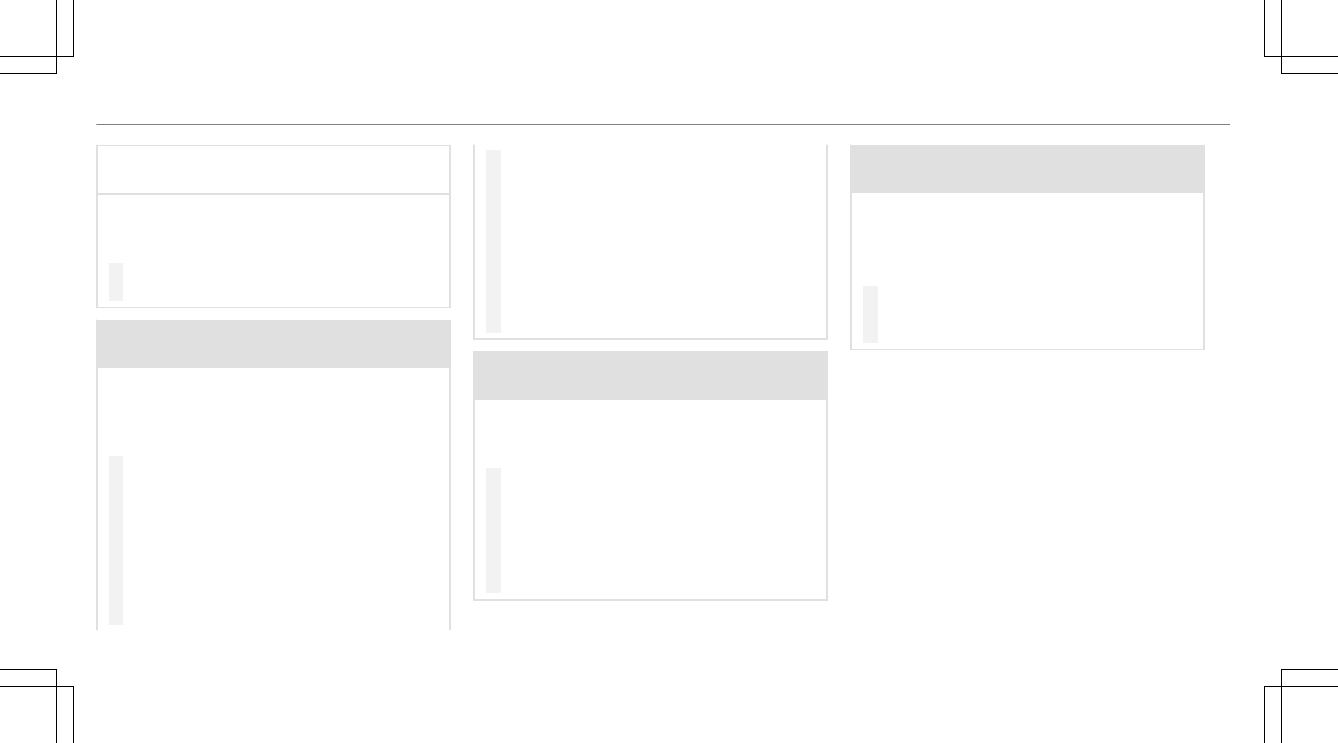*
NOTE Damaging the battery through
overvoltage
When charging using a battery charger with‐
out a maximum charging voltage, the battery
or the vehicle electronics may be damaged.
#
Only use battery chargers with a maxi‐
mum charging voltage of 14.8 V.
&
WARNING Risk of explosion from hydro‐
gen gas igniting
A battery generates hydrogen gas during the
charging process. If there is a short circuit or
sparks start to form, there is a danger of the
hydrogen gas igniting.
#
Make sure that the positive terminal of
the connected battery does not come
into contact with vehicle parts.
#
Never place metal objects or tools on a
battery.
#
When connecting and disconnecting the
battery, you must observe the descri‐
bed order for the battery clamps.
#
When giving starting assistance, always
make sure that you only connect bat‐
tery terminals with identical polarity.
#
During starting assistance, you must
observe the described order for con‐
necting and disconnecting the jumper
cables.
#
Do not connect or disconnect the bat‐
tery clamps while the engine is running.
&
WARNING Risk of explosion during
charging process and starting assistance
During the charging process and starting
assistance, the battery may release an explo‐
sive gas mixture.
#
Avoid fire, open flames, creating sparks
and smoking.
#
Make sure that there is sufficient venti‐
lation during the charging process and
during starting assistance.
#
Do not lean over a battery.
&
WARNING Risk of explosion from a fro‐
zen battery
A discharged battery may freeze at tempera‐
tures slightly above or below freezing point.
During starting assistance or battery charg‐
ing, battery gas may be released.
#
Always thaw a frozen battery out first
before charging it or performing start‐
ing assistance.
If the indicator/warning lamps in the instrument
cluster do not light up at low temperatures, it is
very likely that the discharged battery has fro‐
zen. In this case you may neither jump-start the
vehicle nor charge the battery.
The service life of a battery that has been
thawed may be dramatically shortened. The
starting characteristics may be impaired, espe‐
cially at low temperatures.
It is recommended that you have a thawed bat‐
tery checked at a qualified specialist workshop.
502
Breakdown assistance

